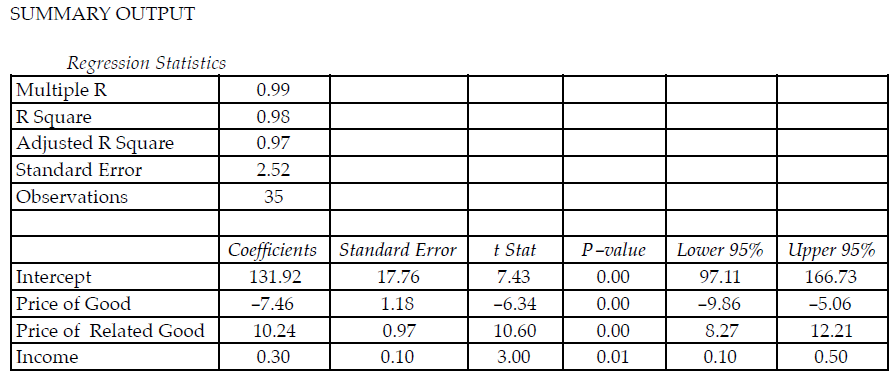Refer to the table below. If the price of your good is $125, the price of the related good is $40, and the average income of consumers is $28,000, what is the point elasticity of demand?

The demand for your product demands on three factors; the price of your good, the price of a related good, and the average income of your customers. Excel estimated the above linear demand for your product.
A) 0.22 B) 1.20 C) 2.20 D) 0.12
D) 0.12
You might also like to view...
The earliest farming dates back to about:
A. 500,000 years ago B. 120,000 years ago C. 26,000 years ago D. 13,000 years ago
Which of the following is the best plan of action for a light-skinned woman of childbearing age living in the tropics and concerned about giving birth to a child with neural tube defects (NTDs)?
A. using a tanning booth to give her skin accelerated protection against the sun B. taking vitamin D supplements C. drinking plenty of fluids to boost her body's ability to regulate its own temperature D. doing nothing, since a woman's chance of giving birth to a child with NTDs is genetically determined E. taking folic acid/folate supplements and protecting herself against the sun with sunscreen, clothing, and shelter
Recent fossil finds from Ethiopia such as the Herto skulls (154,000–160,000 B.P.) and the Omo remains (estimated date 195,000 B.P.) provide accumulated evidence to support the
A. Asian origin of broad-spectrum revolution. B. idea that Neandertals originated in Africa and never left the continent. C. African origin of anatomically modern humans. D. European origin of anatomically modern humans. E. crucial role the manipulation of fire played in the advent of behavioral modernity.
The explanations given in this chapter for the differences in and distribution of skin color in populations around the world are examples of
A. punctuated equilibrium. B. attempts at classifying human groups into clines. C. how having a political interest in justifying racial policies interferes with objective science. D. explanatory approaches to human biological diversity. E. the social construction of so-called scientific categories.